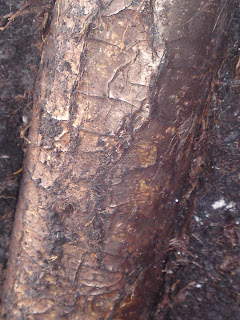The end of the excavation is approaching faster and faster, wich means we are working faster and harder. Next monday the totalstation will go to the Uppåkra excavation, wich is the coolest and most mindblowing iron age site ever. They have tons of great artefacts and mindtwisting stratigraphy. Imagine the things the totalstation will have seen this year. First of all it has recorded amazing mesolithic artefacts at Rönneholm and then it will move on to record just as amazing iron age artefacts at Uppåkra.
This week we have made a lot of progress. We have found a grindingstone, two stones for making stone axes and two or three stone axes along with sporadic stone debitage. This is an indicator pointing towards production of this kind of axes on site. we have also found about seven Villingebaek arrowheads, so its pretty safe to say that layer three is from the middle of the Kongemose period. We have also indications of a fourth, lower layer, that could be from the Blak period. Wich is the transsition betwen the Maglemose and the Kongemose period. There is only one way to find out, and that´s to excavate it.
This week the windgods have been really busy, whipping upp thick clouds of peat dust, that gets in to our eyes, ears and mouths. The weather conditions are bad, but our mood is really good. This is the kind of conditions that separate the kids from the big boys, that brings out the worst in some and the best in others. But giving in to the weather is no option, we keep on working. Luckily we have a lot of things that keep our moods upp. Such as all the finds, the possibility of finding something great, and last but not least, Patriks bad jokes.
Sometimes my ears are so filled with dust that I can feel the dust shifting around in my head when i move, and my eyes are glued together with peatdust. My mouth is so dry and full of peat that i can´t even spit, and hunger is tearing a big hole in my stomach. But I love it, it´s archaeology.
 |
| Besides from keeping out some of the dust, the goggles also make us look fashionable. |
 |
| We look like Russian coleminers. |
 |
| Andreas found this Villingebaek arrowhead just a few minutes after we started work. |
 |
| Moments later he found this microblade core. |





























